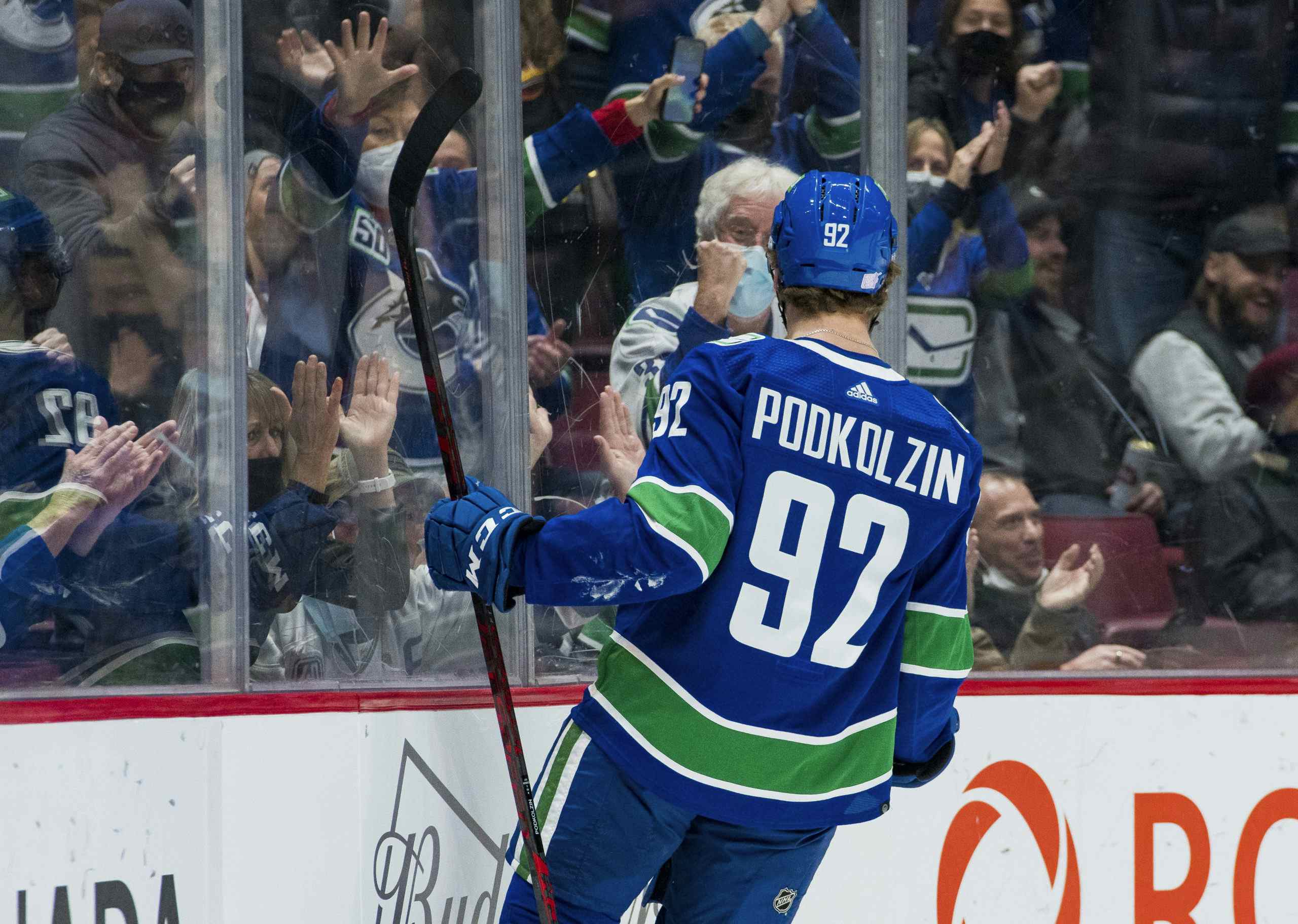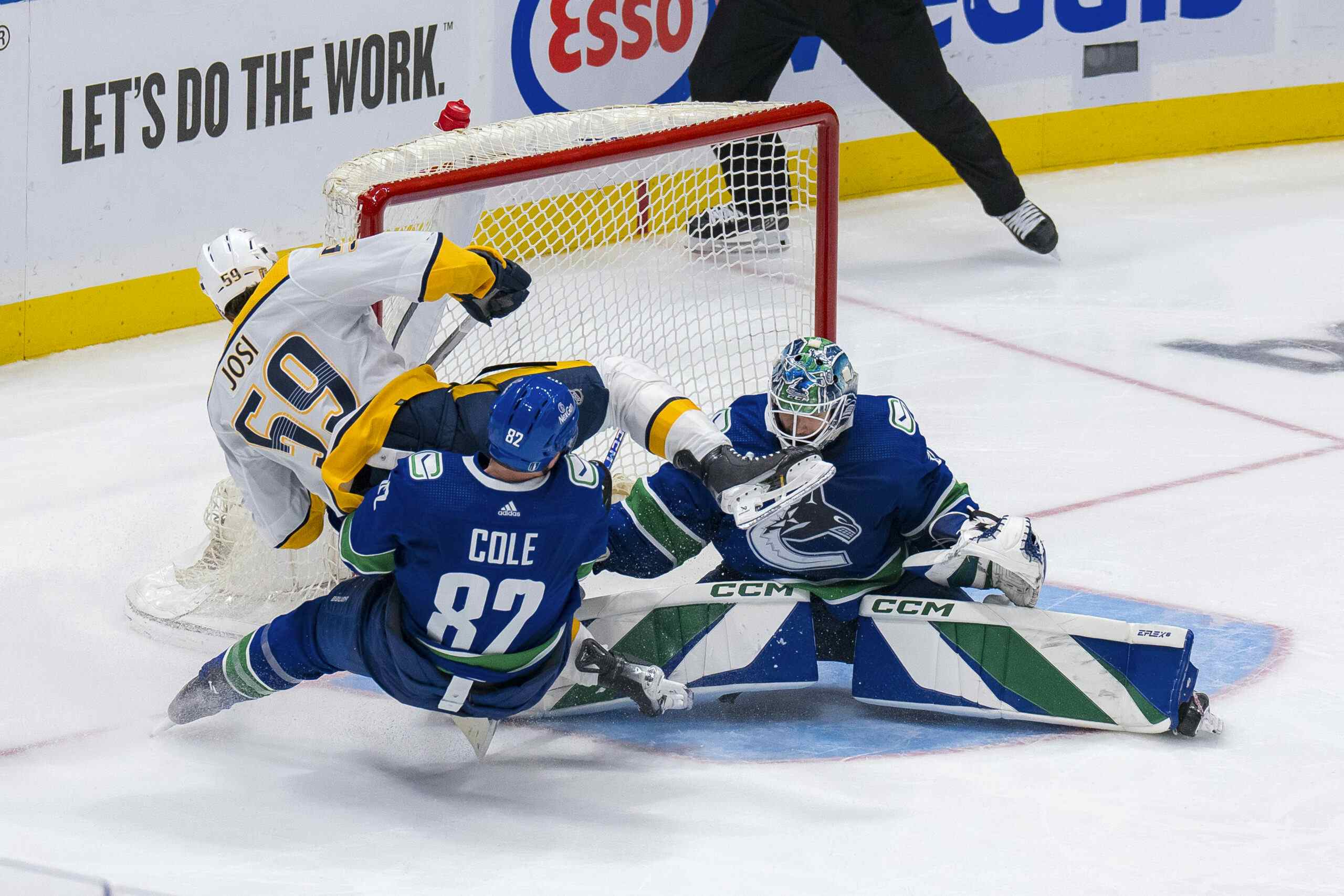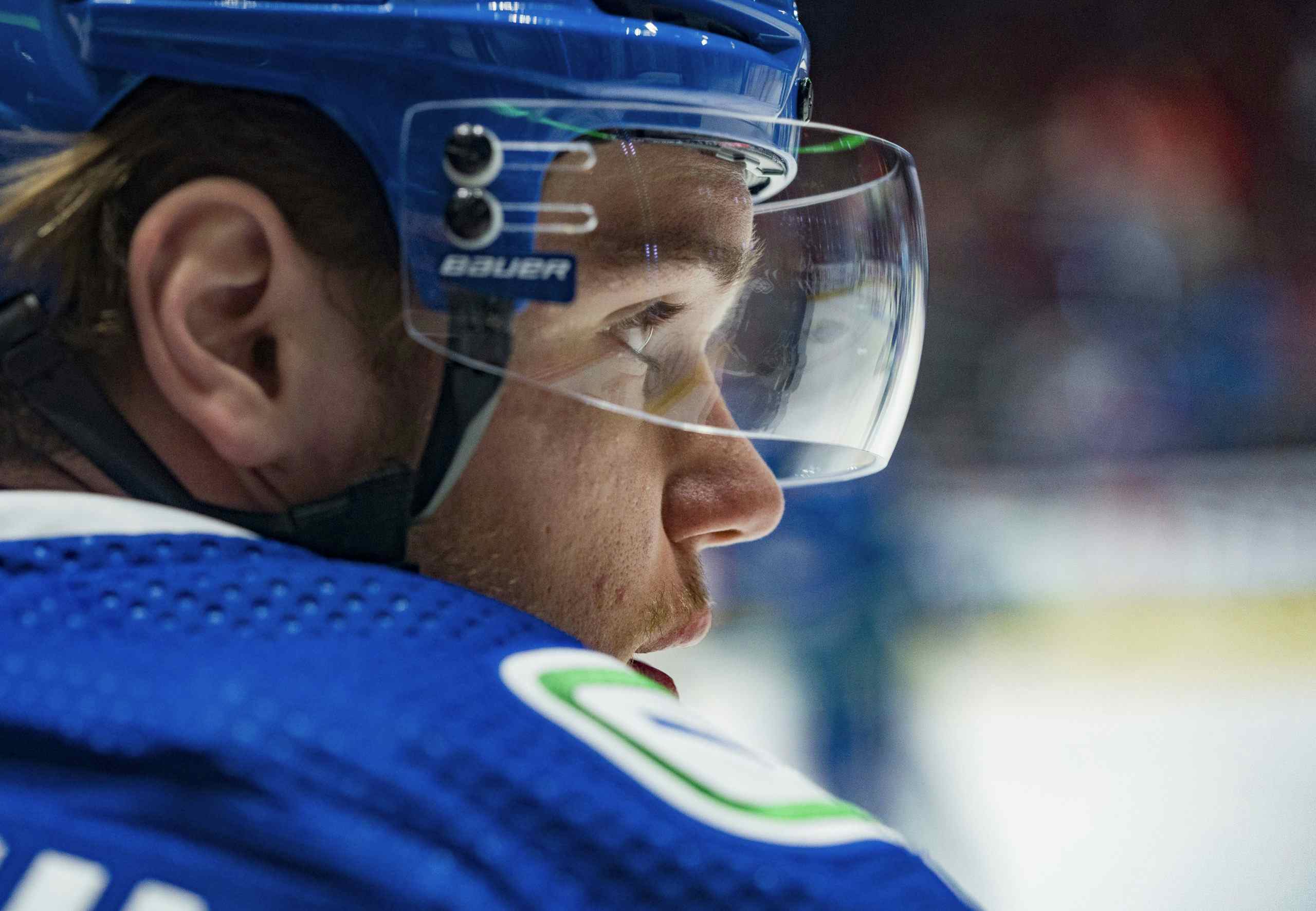Adventures in Deployment: Matching McDavid
By Jeremy Davis
7 years agoWillie Desjardins hasn’t been known for his line matching during his tenure as the head coach of the Vancouver Canucks – in fact, he’s been heavily criticized for it. The Canucks’ bench boss has long showed a preference for rolling four lines, but this year’s preseason held a notable exception: the game against Connor McDavid and the Edmonton Oilers.
Tonight, the Oilers are back in Vancouver, and McDavid is one of the league’s hottest players – something that we’ll probably be a regular occurrence over the next decade. So will Willie and his staff put the same emphasis on hard-matching McDavid like they did in the preseason?
The September 28th game against the Oilers was a notable one, but you likely remember it for a different reason: that was the night that North Dakota alumni Troy Stecher and Drake Caggiula stole the show for their respective teams, combining for three goals and five points. While Stecher is set to play his second career game tonight, Caggiula is sidelined with injury. But it was the deployment of the defence that game that I found most interesting.
I pulled the 5v5 Matchup chart for this game done by mathematician/hockey data visualizer Micah Blake McCurdy. If you’re confused at how to read one, here’s a rundown: bigger boxes mean more ice time, darker boxes mean higher event rates, and the red/blue line indicates possession:

This is a section of the 5v5 matchup chart from the September 28th game showing the Canucks’ defencemen against all Oilers:

Notice the big boxes under McDavid and his two linemates, Milan Lucic and Jordan Eberle. Then notice the itty bitty boxes below the big boxes. Simply put, this represents that Ben Hutton and Erik Gudbranson played a ton of ice time against McDavid’s line, while the other four defencemen (includes tonight’s top pairing of Alex Edler and Troy Stecher) played negligible minutes.
It’s worth noting that the Canucks makeshift top line in that game – Markus Granlund, Emerson Etem, and Derek Dorsett – was also hard-matched against McDavid, but given the rest of the forwards in the lineup that night, it would have been foolish to do otherwise. The defensive match ups are more interesting, in my opinion, because the rest of the defence corps was still relatively reliable.
Before we move along, it’s also worth noting the content of the boxes: the light colour indicates that the event rate was kept fairly low, while the diagonal division of colour indicates that Hutton and Gudbranson held their own, possession-wise, against McDavid’s crew.
During 5-on-5 play, both Hutton and Gudbranson managed 47.6 Corsi-For percentages while skating against McDavid. McDavid and his linemates managed just one more shot attempt for than against in that time – and this is with a top line of Markus Granlund, Emerson Etem and Derek Dorsett filling most of the forward time against McDavid.
Better yet, McDavid was in the red against Hutton/Gudbranson in terms of unblocked shot share (42.9 percent), shots-on-goal share (45.5 percent), and scoring chance share (14.3 percent). This is a very small sample size of course, and I wouldn’t expect this to continue against a talent like McDavid, but it is interesting. Besides, the point of this article was more about the line matching than the actual of the defensive pair.
I used the opposition tables at Natural Stat Trick to generate this chart, which tells us exactly how often McDavid saw each of the Canucks’ defencemen while he was on the ice. The red row shows all of McDavid’s stats, include time on ice and zone starts at both 5-on-5 and in all situations. The subsequent rows are the stats for each Canucks’ defenceman while McDavid was on the ice.

Keep in mind as well that this game was played in Vancouver, and thus the Canucks had last change. There’s absolutely no question that the Canucks coaching staff, be it Willie Desjardins or Doug Lidster (who is in charge of the defence), were hard-matching McDavid with the Hutton-Gudbranson pairing.
Gudbranson and Hutton were on the ice for 82.1 and 79.6 percent of McDavid’s total ice time, respectively, and both were on the ice for 80 percent of McDavid’s faceoffs.
This type of matching represents a departure from this coaching staff’s usual style, which typically involves everyone playing against everyone. Sure, the top pairing always plays considerably more than the bottom pairing, and they’ll try to avoid having the bottom pairing out against an opposing top line, and by virtue of these two factors, the top pairing tends to see the most of the opposing top line. But this level of line matching is a step above, especially in the discrepancy between the first and second pairings (the second pairing in this case, containing Alex Edler, would often actually be considered the third pairing).
For example, in the season opener, Johnny Gaudreau saw more of Chris Tanev and Alex Edler than any other defensive pair (about nine and half minutes), but he also saw Erik Gudbranson and Ben Hutton for about four and a half minutes. The same can be said for the St. Louis top line (using Vladimir Tarasenko as a proxy), and for the Buffalo top line (using Ryan O’Reilly as a proxy). In each case, the second pair saw about the opposing top line around 40-50 percent as often as the top pairing did, rather than roughly 20 percent as it was against McDavid.
It’ll be interesting to see if the Canucks try it again when they host the Oilers in a few hours. Given that Chris Tanev is missing, and the Canucks are icing the same top four that they did in that preseason game, it wouldn’t be surprising to see another case of hard-matching the Hutton-Gudbranson pair, since it worked rather successfully the last time around.
Recent articles from Jeremy Davis





